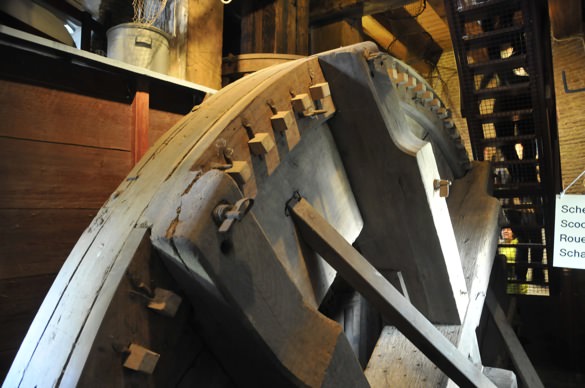Visiting the famous windmills of the Kinderdijk is a truly moving experience. These windmills were originally built to pump water out of the country, which highlights the fact that the Netherlands has been sinking into the North Sea for centuries. Much of the Netherlands is comprised of peat bogs, and the Dutch used to harvest the peat for fuel. Then they discovered that the land beneath their feet was sinking. Today, two-thirds of the country lies below sea level, and massive water works have been developed to protect the country from flooding. Windmills were the original waterworks, and these massive structures can only be fully appreciated when viewed in person. They are truly gigantic.
Visiting the Kinderdijk windmills, which are located in the quiet countryside outside of Rotterdam, makes for a relaxing day trip in the Dutch countryside. I was visiting while a guest of Viking River Cruises. There are 19 windmills total—one of the highest densities of old-fashioned windmills in the world—and beautiful canals populated by hundreds of species of waterfowl. You can walk among the windmills on a series of paths at no cost, or you can take a boat cruise for 4€ to see the windmills from the canal that runs between them. Bicycles can also be rented, and you can ride on bike paths through the brilliantly green fields.
Most of the windmills were built in the 18th century, and they were constructed using wood from all over the world—from Brazil to South Africa. Canvas sails are strapped to the wooden frames of the turbines each morning, and, catching the wind, they raise and lower a massive wooden beam that runs through the center of the mill. Since many of the windmills are four or more stories high, this beam is huge! The movement sets a series of gears in motion that raises and lowers a scoop into the water, thereby pulling the water out of the overflowing canal and dumping it elsewhere. The millers can use more or less canvas, just like sailors, depending on how strong the wind is. The top floor of the windmills actually rotates, to harness wind from all directions.
Millers still work inside of the mills today. The profession is hard to enter and requires years of training. As the Kinderdijk website reads, “Q: Can you rent a windmill? A: Sure, after your certification as miller and being on top of the list and approval of the water board but don’t be in a hurry because this will give you hart problems [sic].”
You can tour the inside of a windmill, too. The cost is 6€, and the windmill is set up to look like a working, inhabited windmill, replete with mannequins in traditional garb. It highlights the difficulty of living in a home where 50% of the space is dedicated to giant wooden gears. Anyone who works with wood will particularly enjoy this part of the tour. To complete your windmill training, an interactive museum has recently opened on-site. Its displays feature in-depth descriptions; make sure to check out the informative movie, which involves multiple screens and is quite funny.
Kinderdijk can be easily reached by Rotterdam and Utrecht, and it takes roughly two hours to arrive from Amsterdam. From April to October, the Rebusboat excursion takes visitors from Rotterdam to Kinderdijk. It takes roughly three hours and costs 14€ for adults/11€ for kids.
Written by and photos by Mattie Bamman for EuropeUpClose.com





